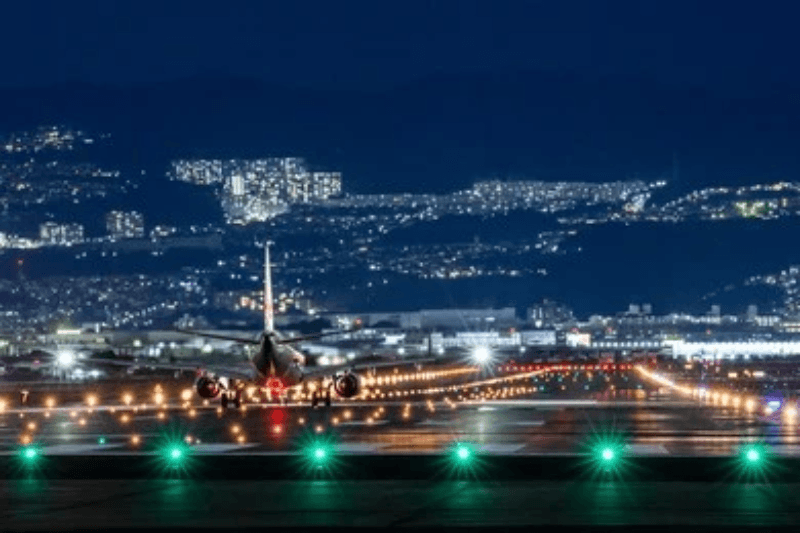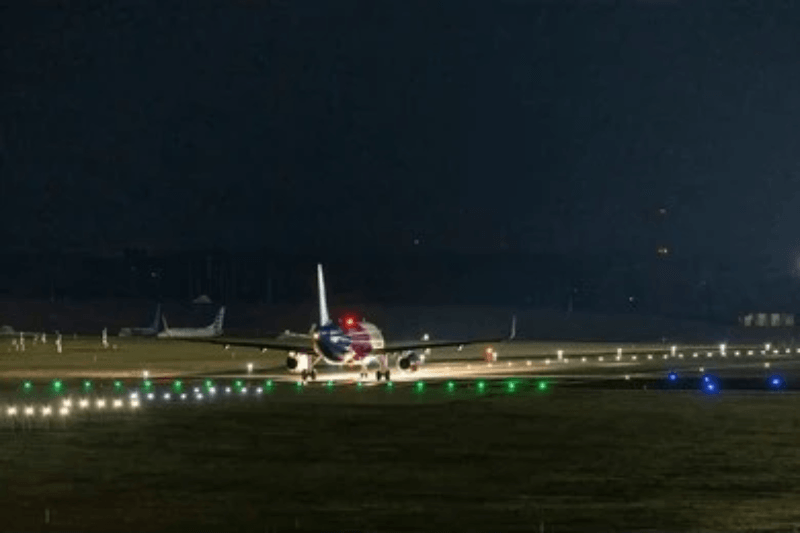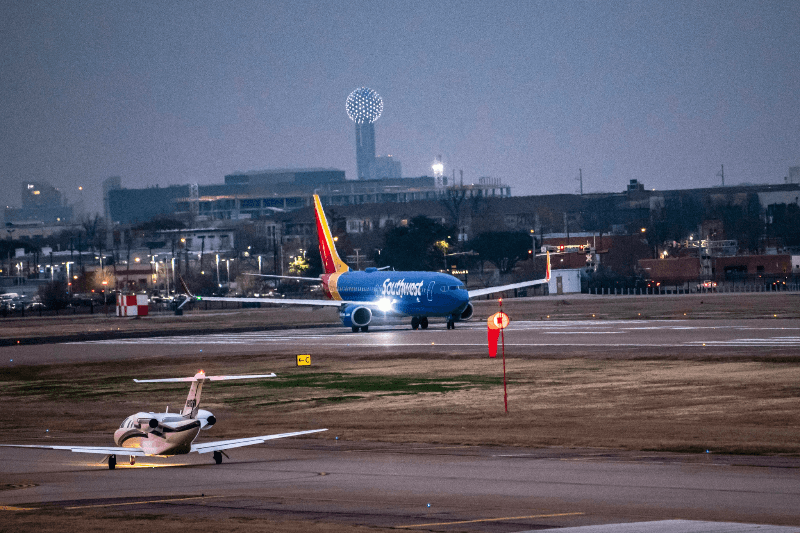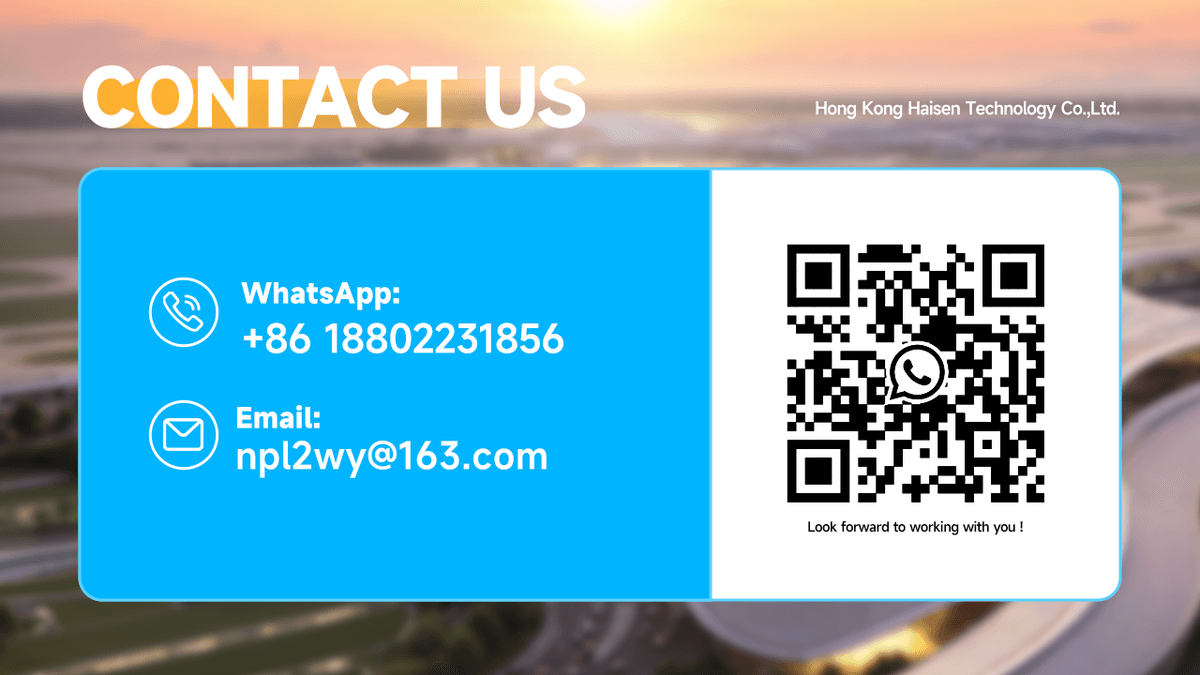The Runway Lighting Intensity System is the cornerstone of safe aviation operations, as it directly controls the visibility of runways for pilots during takeoffs, landings, and taxiing—even in harsh weather like fog, rain, or snow. Without a well-designed and maintained Runway Lighting Intensity System, airports face increased risks of flight delays, runway incursions, and even accidents, making it an indispensable part of modern airfield infrastructure. In this comprehensive guide, we’ll break down the key components of the Runway Lighting Intensity System (including High Intensity Approach Lighting System/HI-ALS, Medium Intensity Approach Lighting System/MALSR, and Low Intensity Approach Lighting System/L-862), explain why proper intensity calibration matters, highlight the role of routine maintenance, and showcase how Haisen’s Light Intensity Tester optimizes the Runway Lighting Intensity System. By the end, you’ll understand how to enhance your airfield’s safety, comply with global standards, and reduce operational costs—all while attracting more airlines with a reliable Runway Lighting Intensity System.
1. The Critical Role of Runway Lighting Intensity System in Aviation Safety
Before diving into specific components, it’s essential to grasp why the Runway Lighting Intensity System is non-negotiable for any airport. Every phase of flight—from a pilot’s final approach to touchdown and taxiing—relies on clear visual cues, and the Runway Lighting Intensity System delivers those cues by adjusting light brightness to match real-world conditions.
- All-Weather Reliability: The Runway Lighting Intensity System ensures visibility even when natural light is poor (e.g., night flights) or weather blocks visibility (e.g., dense fog). For example, during a fog event with visibility as low as 300 meters, a properly calibrated Runway Lighting Intensity System (like HI-ALS) cuts through the mist, giving pilots a clear path to the runway.
- Precision Guidance: Different parts of the Runway Lighting Intensity System (such as MALSR’s light bars or L-862’s alignment lights) help pilots judge their altitude, distance from the runway, and alignment—critical for avoiding missteps during landing.
- Global Compliance: The Runway Lighting Intensity System must meet standards set by the International Civil Aviation Organization (ICAO) and regional bodies (e.g., FAA in the U.S.). Without compliance, airports risk losing certification, which blocks international flights and reduces revenue.

2. Key Components of the Runway Lighting Intensity System: HI-ALS, MALSR, L-862
The Runway Lighting Intensity System isn’t a single fixture—it’s a network of specialized systems, each designed for specific visibility needs. Below are the three core components that make up a fully functional Runway Lighting Intensity System, along with their roles, benefits, and use cases.
2.1 High Intensity Approach Lighting System (HI-ALS): For Adverse Weather
As a flagship part of the Runway Lighting Intensity System, the High Intensity Approach Lighting System (HI-ALS) is engineered for high-visibility needs, especially in severe weather. Unlike lower-intensity systems, HI-ALS uses ultra-bright, sequenced lights to create a clear “path” for pilots during final approach.
Core Features of HI-ALS in the Runway Lighting Intensity System
- Light Intensity Range: HI-ALS typically operates at 1,000–10,000 candelas (cd)—far brighter than other components of the Runway Lighting Intensity System—ensuring it penetrates fog, heavy rain, or snow.
- Sequenced Flashing Lights: Most HI-ALS setups include white flashing lights that sequence toward the runway, giving pilots a visual “guide” to adjust their descent angle.
- ICAO Compliance: HI-ALS meets ICAO Annex 14 standards, which require high-intensity systems to be visible from at least 8 kilometers away during clear weather.
Advantages of HI-ALS for the Runway Lighting Intensity System
- Reduced Delay Risk: Airports with HI-ALS in their Runway Lighting Intensity System experience 60–70% fewer weather-related delays, as pilots can land safely even in low-visibility conditions.
- Enhanced Pilot Confidence: The bright, consistent light from HI-ALS lets pilots accurately judge their position relative to the runway, reducing stress during critical landing phases.
- Long-Term Durability: HI-ALS fixtures are built to withstand extreme temperatures (-40°C to 70°C) and corrosion, making them a low-maintenance part of the Runway Lighting Intensity System.

2.2 Medium Intensity Approach Lighting System (MALSR): For Balanced Visibility
The Medium Intensity Approach Lighting System (MALSR) is a versatile component of the Runway Lighting Intensity System, designed for airports that handle moderate traffic and face occasional low-visibility conditions. It bridges the gap between high-intensity HI-ALS and low-intensity L-862, offering reliable guidance without the higher cost of HI-ALS.
How MALSR Functions in the Runway Lighting Intensity System
- Physical Layout: MALSR consists of a series of light bars (usually 5–7) that extend 300–500 meters from the runway threshold. These bars are spaced evenly to create a visual “line” leading to the runway.
- Light Intensity Level: MALSR operates at 100–500 candelas—lower than HI-ALS but higher than L-862—making it ideal for clear to slightly cloudy weather.
- Color-Coded Cues: Some MALSR setups include red lights near the runway threshold to alert pilots when they’re too low, adding an extra layer of safety to the Runway Lighting Intensity System.
Benefits of MALSR for Pilots and Airports
- Cost-Effective: MALSR is 30–40% cheaper to install and maintain than HI-ALS, making it a great choice for regional airports building out their Runway Lighting Intensity System.
- Flexible Use: MALSR works in both day and night operations, adjusting its intensity based on ambient light (a key feature of the Runway Lighting Intensity System).
- Reduced Incursions: By clearly marking the approach path, MALSR helps pilots avoid drifting off-course—lowering the risk of runway incursions, a top concern for airport safety teams.

2.3 Low Intensity Approach Lighting System (L-862): For Small Airports & Night Operations
The Low Intensity Approach Lighting System (L-862) is a compact, efficient component of the Runway Lighting Intensity System, designed for small airports, private airfields, or locations with minimal low-visibility risks. While it’s less bright than HI-ALS or MALSR, L-862 plays a vital role in ensuring basic safety for night flights.
Key Traits of L-862 in the Runway Lighting Intensity System
- Light Intensity: L-862 operates at 10–50 candelas—low enough to avoid glare during night flights but bright enough to mark the runway edges.
- Simple Design: L-862 typically includes 4–6 lights placed along the approach path, focusing on alignment rather than long-distance visibility (a core goal of the Runway Lighting Intensity System for small airfields).
- ICAO Compliance: Like other parts of the Runway Lighting Intensity System, L-862 meets ICAO standards for low-intensity lighting, ensuring consistency across global airfields.
Why L-862 Is Essential for Small Airports
- Easy Installation: L-862 can be installed in 1–2 days (compared to 1–2 weeks for HI-ALS), making it a fast way to upgrade a small airport’s Runway Lighting Intensity System.
- Low Energy Use: L-862 uses LED technology (now standard in the Runway Lighting Intensity System) to cut energy costs by 50% compared to older incandescent systems.
- Night Safety Boost: Before L-862, many small airports closed at night due to poor visibility. With L-862 in their Runway Lighting Intensity System, these airports can extend operations, increasing revenue from private and regional flights.

3. Why Proper Maintenance Is Critical for Runway Lighting Intensity System
A top-tier Runway Lighting Intensity System (with HI-ALS, MALSR, or L-862) will fail without regular maintenance. The goal of maintenance is to keep the Runway Lighting Intensity System calibrated, functional, and compliant—avoiding costly downtime and safety risks. Below are the key maintenance practices for every Runway Lighting Intensity System.
3.1 Routine Inspections: Catch Issues Early
Regular inspections are the backbone of a reliable Runway Lighting Intensity System. Airport teams should follow this schedule:
- Daily Checks: Use a remote monitoring tool (integrated with the Runway Lighting Intensity System) to verify that HI-ALS, MALSR, and L-862 are all powered on and emitting the correct intensity. Look for alerts like “dim HI-ALS lights” or “faulty L-862 sensor.”
- Weekly Checks: Physically inspect fixtures for damage (e.g., cracked lenses, water intrusion) and clean light covers to remove dirt or debris—both of which can reduce the effectiveness of the Runway Lighting Intensity System.
- Monthly Checks: Test the alignment of MALSR light bars and L-862 fixtures to ensure they’re still pointing toward the runway (misalignment is a common issue that undermines the Runway Lighting Intensity System).
3.2 Calibration: Keep Intensity Accurate
Calibration ensures the Runway Lighting Intensity System meets ICAO and regional standards. For example:
- HI-ALS must be calibrated to 1,000–10,000 cd (depending on weather conditions).
- MALSR needs calibration to 100–500 cd.
- L-862 should be calibrated to 10–50 cd.
Without calibration, the Runway Lighting Intensity System may be too bright (causing glare) or too dim (reducing visibility)—both of which risk accidents.
3.3 The Cost of Neglecting Runway Lighting Intensity System Maintenance
Skipping maintenance leads to:
- Runway Closures: If a faulty HI-ALS or MALSR is detected, the runway may close until repairs are made—costing airports \(10,000–\)50,000 per hour in lost revenue.
- Safety Violations: Non-compliant Runway Lighting Intensity System can result in fines from ICAO or FAA (up to $100,000 for repeat offenses).
- Accidents: In 2023, 12% of aviation incidents were linked to poorly maintained Runway Lighting Intensity System—including one case where a pilot misaligned with the runway due to dim L-862 lights.
4. Haisen’s Light Intensity Tester: The Solution for Optimizing Runway Lighting Intensity System
Maintaining the Runway Lighting Intensity System (HI-ALS, MALSR, L-862) is easier with the right tools—and Haisen’s Light Intensity Tester is the industry’s top choice. This innovative device is designed to simplify testing, reduce costs, and ensure the Runway Lighting Intensity System meets global standards.
4.1 Key Features of Haisen’s Light Intensity Tester for Runway Lighting Intensity System
- Remote Testing: Unlike manual testers (which require technicians to stand on the runway), Haisen’s tool lets you measure HI-ALS, MALSR, and L-862 intensity from a safe distance (up to 500 meters). This cuts testing time by 70% and eliminates runway closure during checks—critical for busy airports relying on their Runway Lighting Intensity System.
- Real-Time Data: The tester displays light intensity readings (in candelas) instantly, so you can spot issues with the Runway Lighting Intensity System immediately (e.g., a MALSR bar emitting 80 cd instead of 100 cd).
- Compliance Reporting: Haisen’s tool generates automated reports that prove your Runway Lighting Intensity System meets ICAO and FAA standards—saving hours of paperwork for airport safety teams.
- Portability: Weighing just 2 kg, the tester is easy to carry across the airfield—perfect for checking multiple parts of the Runway Lighting Intensity System (e.g., HI-ALS at one end of the runway, L-862 at the other).

4.2 How Haisen’s Tester Saves Money for Runway Lighting Intensity System
- Reduces Downtime: By testing the Runway Lighting Intensity System remotely, you avoid closing the runway—saving \(10,000–\)50,000 per test.
- Lowers Labor Costs: Manual testing of the Runway Lighting Intensity System requires 2–3 technicians; Haisen’s tool needs just 1, cutting labor costs by 50%.
- Prevents Repairs: Early detection of issues (via real-time data) means you fix small problems with the Runway Lighting Intensity System (e.g., a dim L-862 light) before they become expensive repairs (e.g., replacing an entire HI-ALS fixture).
4.3 Customer Success: How Haisen’s Tester Improved One Airport’s Runway Lighting Intensity System
A regional airport in Asia was struggling with:
- Monthly runway closures to test its Runway Lighting Intensity System (HI-ALS and MALSR).
- Inconsistent intensity readings (leading to ICAO warnings).
- $20,000 in lost revenue per closure.
After adopting Haisen’s Light Intensity Tester:
- The airport eliminated runway closures for testing (using remote checks).
- Its Runway Lighting Intensity System maintained 100% ICAO compliance.
- It saved $240,000 annually in lost revenue.
This case shows how Haisen’s tool transforms the Runway Lighting Intensity System from a maintenance headache into a reliable asset.
5. FAQ: Your Top Questions About Runway Lighting Intensity System Answered
To help you make informed decisions about your Runway Lighting Intensity System, we’ve addressed the most common questions from airport managers and safety teams.
Q1: Which component of the Runway Lighting Intensity System is right for my airport?
A: It depends on your traffic and weather:
- Busy international airports: Choose HI-ALS (part of the Runway Lighting Intensity System) for all-weather reliability.
- Regional airports: MALSR (part of the Runway Lighting Intensity System) balances cost and performance.
- Small/private airports: L-862 (part of the Runway Lighting Intensity System) is cost-effective for night operations.
Q2: How often should I test my Runway Lighting Intensity System with Haisen’s Tester?
A: We recommend:
- HI-ALS: Test every 2 weeks (critical for the Runway Lighting Intensity System’s all-weather performance).
- MALSR: Test monthly.
- L-862: Test every 6 weeks.
Q3: Does the Runway Lighting Intensity System work with solar power?
A: Yes! Modern Runway Lighting Intensity System components (HI-ALS, MALSR, L-862) can be paired with solar panels—ideal for remote airports without grid access. Haisen’s Tester works with solar-powered Runway Lighting Intensity System too.
Q4: Can Haisen’s Light Intensity Tester help my Runway Lighting Intensity System meet FAA standards?
A: Absolutely. The tester is calibrated to FAA Advisory Circular 150/5345-46 (the standard for Runway Lighting Intensity System in the U.S.) and generates reports that satisfy FAA inspectors.
Q5: How long does it take to install a new Runway Lighting Intensity System (e.g., HI-ALS)?
A: For HI-ALS: 1–2 weeks (depending on runway length). For MALSR: 3–5 days. For L-862: 1–2 days. Haisen’s team can assist with installation to ensure your Runway Lighting Intensity System is set up correctly.

6. Get Your Runway Lighting Intensity System Solution Today
A reliable Runway Lighting Intensity System is the key to safer flights, fewer delays, and more revenue. Whether you need to upgrade your existing Runway Lighting Intensity System (HI-ALS, MALSR, L-862) or invest in Haisen’s Light Intensity Tester, our team is here to help.
What We Offer:
- Custom Runway Lighting Intensity System Design: We’ll assess your airport’s needs (traffic, weather, budget) and recommend the right components (HI-ALS, MALSR, L-862) for your Runway Lighting Intensity System.
- Haisen’s Light Intensity Tester: Purchase or rent the industry’s leading tool for testing your Runway Lighting Intensity System—with 24/7 technical support.
- Maintenance Services: Our team can handle routine inspections and calibration of your Runway Lighting Intensity System, ensuring it stays compliant and functional.
Take the Next Step:
- Free Site Assessment: Contact us to schedule a no-cost evaluation of your current Runway Lighting Intensity System.
- Custom Quote: Get a personalized quote for your Runway Lighting Intensity System upgrade or Haisen’s Tester.
- Fast Installation: We’ll install your new Runway Lighting Intensity System with minimal runway downtime.

